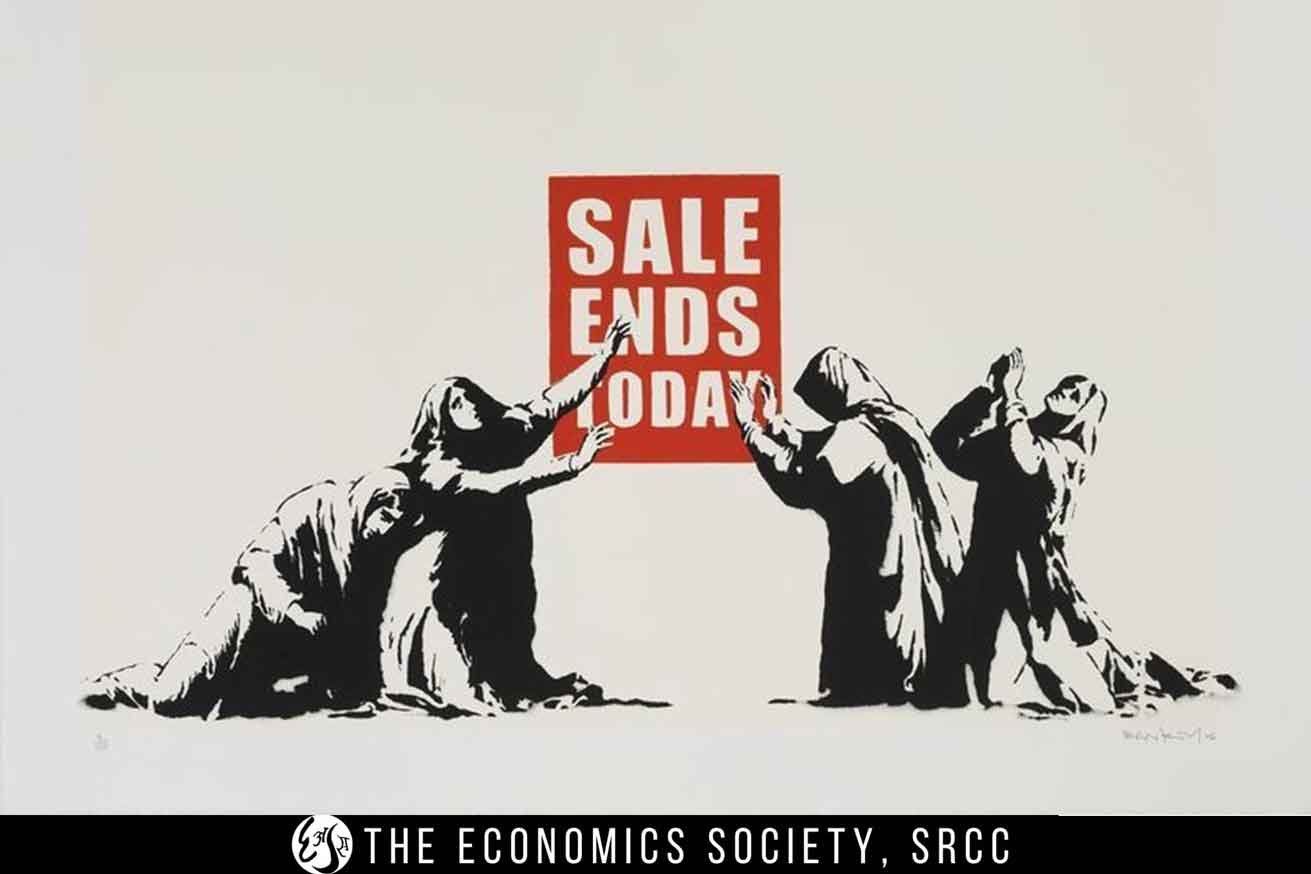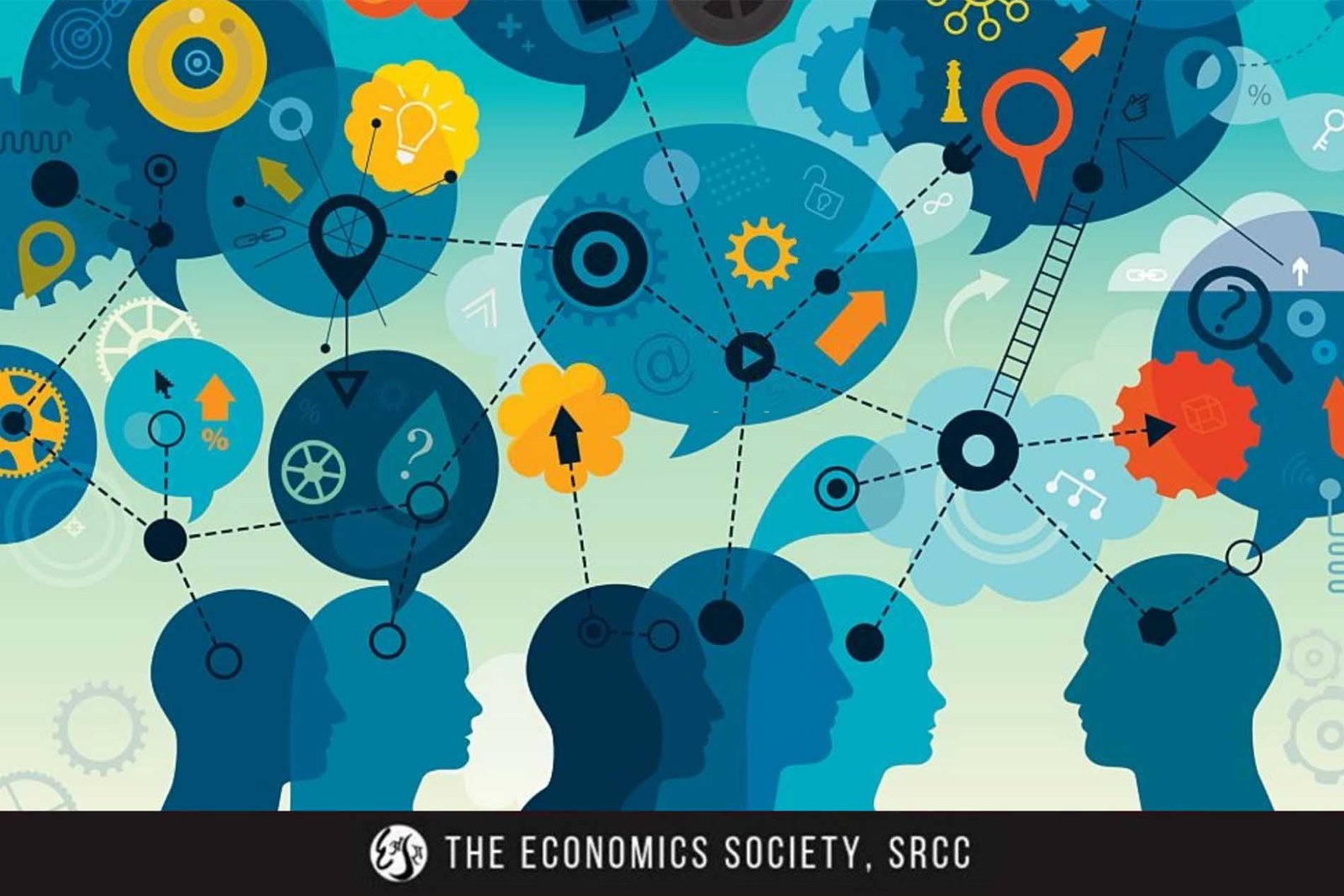
Being Somebody, Becoming Nobody

A documentary was released recently on the American Richard Alpert metamorphosed into Baba Ram Dass as a disciple of the Indian Neem Karoli Baba. It is about his own journey and teachings revolving around the concept of ‘becoming nobody’. In other words, it is about gaining ‘spiritual identity’ through Eastern spirituality and yoga and not through the Western infatuation with psychedelic drugs. As he used to say, “Everyone is busy being somebody, in vain, in the material world instead of being busy successfully discovering one’s spiritual heart.” What is this tangible and also intangible ‘somebody’ and how does it come about? This needs an inquiry into consumerist psychopathology that the neoclassical economists do not do. We need to accept valuable education from institutional economists such as Thorstein Veblen and John Kenneth Galbraith; ecological (degrowth) economists such as Giorgos Kallis; and critics of corporate globalization and capitalism such as Naomi Klein, who is presently with the Media, Culture and Feminist Studies department at the Rutgers University in the US. Thanks to Brian Davey, we can reckon with the knowledge and wisdom in this regard.
This ‘somebody’ as a nobody that is relentlessly sought after in the modern consumer society is about how not only the rich, but also other sections of society use consumption goods to profile and project themselves. It is nothing but status display at work—how status conscious people pursue the acquisition of ‘positional goods’ which signal one’s position in society and depend on relative income. This has become rampant over time with the rise of the all-pervasive presence of ‘brands’ which work together with advertising to create a consumer society—a society of technicolour appearance and empty narratives designed to deceive and manipulate. When we study the evolution of advertising and of ‘brands’, we come to know many dazzling and depressing things as follows. Such ideas are not revealed to us in the neoclassical economics textbooks.
The economy has moved a long way from when it was about people selling products to other people in markets that were regulated to ensure that prices were fair. By the end of the 19th century and the early 20th century, advertisements were about selling innovations, new kinds of products like cars, telephones and electric lights which producers needed to convince people to use. The adverts were like product news bulletins. This was to change as a process of building an image around a particular brand name began. Generic goods like sugar, flour, soap and cereals had hitherto been scooped out of barrels by local shopkeepers. These now had names bestowed on them, particularly with a view to evoke a feeling of folksiness and familiarity, so much so that henceforth it was the product brand names—artificial images of imagined personalities—which interfaced between consumers and producers rather than the shopkeepers! The advertisers became the ‘philosopher kings’ of commercial culture as they evolved their techniques of psychological manipulation by delving into psychology, anthropology and culture.
The methodologies employed in advertising, marketing and public relations are all about shaping preferences. But the neoclassical economists as ‘methodological individualists’ are blind to how preferences are formed. They are content to ridiculously assume that people have given preferences and that they act rationally on the basis of these preferences in the face of prices and a certain amount of purchasing power. They do not pay any attention to the way people influence one another in the presence of a fashion industry and the efforts that marketing departments make to create collective consumption trends. These marketing approaches actively foster disutility because they ‘work’ by creating perpetual dissatisfaction through new products and rival status display.
Sales departments, advertisers and public relations companies do not, thus, take people’s preferences as given. They are a big part of the economy but they are ignored by the neoclassical economists. The sales departments and the marketeers do not use ideas from ‘utility maximization theory’. They take ideas from group psychological dynamics, crowd psychology and approaches from psychotherapy theory which explore the interplay between human emotion and cognition. Coming back to the discourse on consumer society, we notice that money in this society is made when people ‘have to have’ products and stay on the treadmill of work, spending and debt. Society functions by advertisers ensuring that people feel uncomfortable, inadequate and bereft unless they have the latest product designed for their peer group, which is also an identifiable market segment. The advertisers indulge in an astute manipulation that forms motivation to keep on buying through the use of stories, rituals, ceremonies and culture. They drive home the moral that the audience is lacking in something that possession of the brand will give them, and they give the message that new products will make us a better and more desirable person which means that we are not good enough as we are right now. For example, “to be attractive, to be in tune with the American grand narrative of rugged individualism, personified by the cowboy, one needs to buy Marlboro cigarettes and participate in the social ritual of smoking them. In contrast with the identity in an indigenous society, where people have totem identification with a creature, or a plant, based on deep knowledge and loyalty to part of the natural world, individuals in the consumer society define themselves partly through brand loyalty.
The consumer totems are the designer labels that fashionistas wear—a sign of their discrimination, knowledge and affluence as consumers…Metaphorical allusion portrayed in vivid colour in high definition and on the biggest possible screens attempt to create emotional links between brands and desirable episodes or scenes in personal life stories. Fizzy drinks with sugar in them, are associated with adolescent sexuality in blue jeans. Getting the boy, getting the girl, getting the job, your forthcoming celebrity status, the perfect mum, dependable dad, the happy family—all are associated with a product—perfume or gravy granules. Messages of this type bombard us all with attention-grabbing messages from street billboards, newspapers, magazines, television and cinema commercials, on the internet, on the radio. Over and over again, visual and narrative connections are made between sex, glamour, wealth, power, speed, desirability, happy families, and shiny new products magnified and flashing in front of our eyes, dynamically displayed with clever graphical effects. We thus see a large part of the economy in terms of its institutions and technical infrastructure, existing solely for the purpose of grabbing our attention.
In this economy of attention sucking, the concerns and priorities of the upper-rich elite and their hangers are massively magnified. At the same time, in the information space of this economy, the concerns and needs and suffering of the large part of the world’s population are ignored so that the ordinary people become material and non-material ‘nobodies’ who are noticed only when they get in the way of elite agendas and/or require expenditure and management because they have become a problem. The best example in this regard in India now are the farmer protests all over the country. What a pain they are for the giant corporations and their ruling government! This economy of attention grabbing operates with a vast deceptive façade. It does not highlight how status display leads to a waste of resources along with increasing pollution. The variety displayed in consumer society is an illusion when we know that the variety is produced by fewer and fewer business groups. The façade also hides a high proportion of world trade and world finance routed through tax havens and secrecy jurisdiction and how there are factories producing the stuff staffed by child and slave labour in unsafe conditions and how there are oil spills and air and water contamination, greenhouse gas emissions, military intimidation of workers and mountains and mountains of toxic throw away trash. Economics textbooks which do not reveal to you all these things are part of this façade.
Their “descriptions of markets are about products not about brands. The fact that branding and advertising are about creating product differentiation makes nonsense of the default assumption in the textbooks that most production is from competitive firms producing homogenous products. Textbooks are still describing a world in which shopkeepers scoop flour, sugar and cereals out of a barrel. Into this barrel the shopkeepers have put the identical products of a large number of producers, all of whom were obliged to sell at a going market price. But of course, if you go to buy some kind of computer, car, or any other appliance, there is a bewildering variety of non-comparable products and a barrage of adverts as to the advantages of each. While price plays a role in the choice of a product it is often a minor one. The textbook authors have little to say about the huge growth and economic importance of marketing. The exponential and continuous rise of the marketing industry demonstrates that the chief constraints on what companies supply are not production conditions, leading to rising internal costs as companies try to expand. Rather the constraints on firms are external market limits if they try to sell more of their brand beyond their market niche. The neoclassical economics textbooks do not capture our disutility of frustrations with not becoming ‘somebody’, leave alone our frustrations with becoming ‘nobody’ in the real world. The spiritual ‘nobody’ seeking is of course beyond their discourse.
By Annavajhula
J.C. Bose,
PhD Department of Economics, SRCC
References


